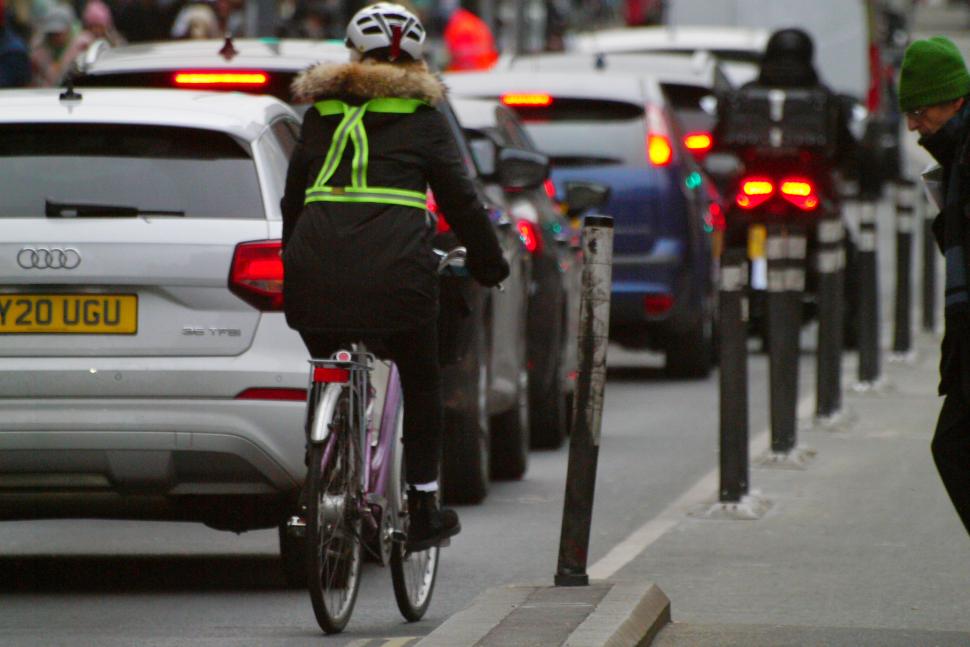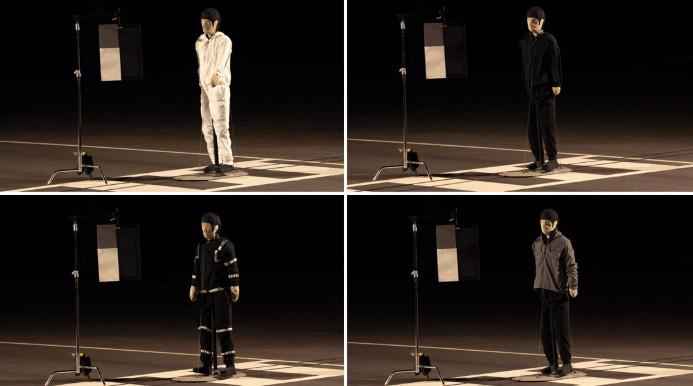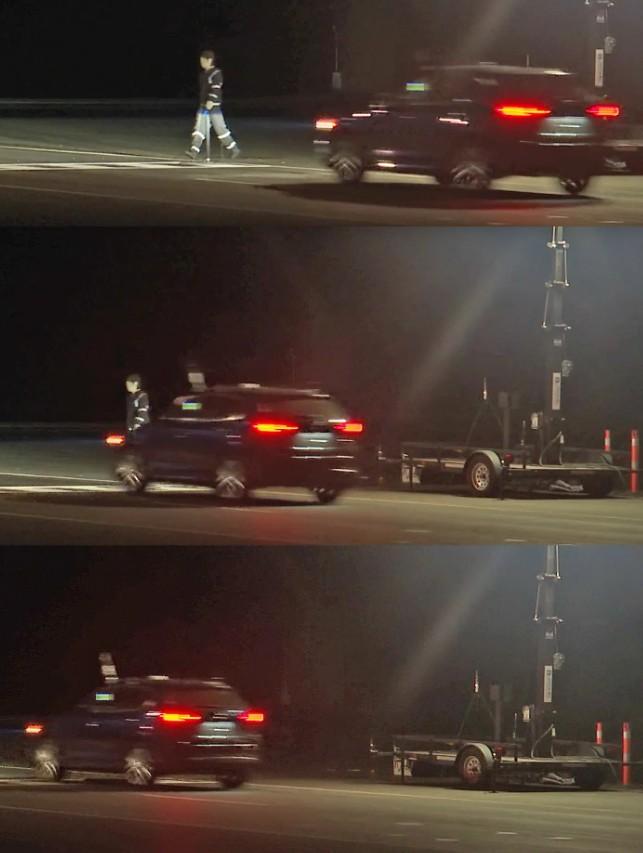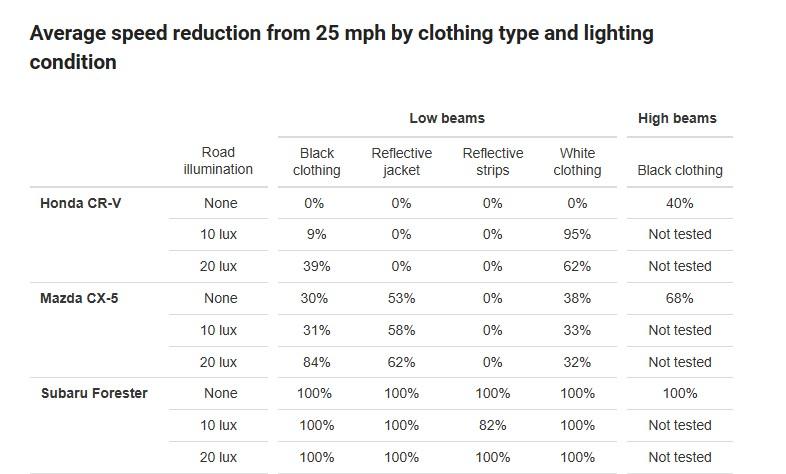- News
- Reviews
- Bikes
- Accessories
- Accessories - misc
- Computer mounts
- Bags
- Bar ends
- Bike bags & cases
- Bottle cages
- Bottles
- Cameras
- Car racks
- Child seats
- Computers
- Glasses
- GPS units
- Helmets
- Lights - front
- Lights - rear
- Lights - sets
- Locks
- Mirrors
- Mudguards
- Racks
- Pumps & CO2 inflators
- Puncture kits
- Reflectives
- Smart watches
- Stands and racks
- Trailers
- Clothing
- Components
- Bar tape & grips
- Bottom brackets
- Brake & gear cables
- Brake & STI levers
- Brake pads & spares
- Brakes
- Cassettes & freewheels
- Chains
- Chainsets & chainrings
- Derailleurs - front
- Derailleurs - rear
- Forks
- Gear levers & shifters
- Groupsets
- Handlebars & extensions
- Headsets
- Hubs
- Inner tubes
- Pedals
- Quick releases & skewers
- Saddles
- Seatposts
- Stems
- Wheels
- Tyres
- Health, fitness and nutrition
- Tools and workshop
- Miscellaneous
- Cross country mountain bikes
- Tubeless valves
- Buyers Guides
- Features
- Forum
- Recommends
- Podcast
news
 Cyclist in London high-vis braces - copyright Simon MacMichael
Cyclist in London high-vis braces - copyright Simon MacMichaelCyclists’ hi-vis clothing invisible to some car brands’ automated emergency braking systems, shocking crash prevention study finds
During the winter months, police forces, politicians, and road safety organisations regularly advise cyclists and pedestrians to ‘be safe, be seen’ by wearing reflective clothing when out on the roads. But, according to an alarming new study conducted by a vehicle safety organisation, hi-vis gear could in fact make cyclists invisible to some car brands’ automated emergency braking systems.
The research, carried out by the US-based Insurance Institute for Highway Safety (IIHS), even found that the crash prevention system employed in a Honda CR-V failed to recognise or slow down even a fraction for pedestrians wearing reflective clothing, while the braking system deployed in a Mazda CX-5 failed to stop for a mannequin wearing clothes with reflective strips.
According to the IIHS, past research has shown that automatic emergency braking (AEB) systems reduce the rate of pedestrian crashes of all severities by 27 per cent. However, on dark roads at night, their effect becomes negligible.
The institute’s new study sought out to test the effects of “conspicuous clothing” and increased road lighting at night on the performance of AEB systems installed in three 2023 car models, a Honda CR-V, Mazda CX-5, and Subaru Forester.
Researchers conducted multiple trials with an adult-sized dummy wearing a range of different clothes: a black jumper and trousers (top right in the above image), a highly reflective jacket with black trousers (bottom right), a black jumper and trousers with reflective strips attached to the dummy’s limbs and joints (bottom left), and a white jumper and trousers (top left).
The tests were run at 25mph in three conditions: with no road lighting, with 10 lux of illumination, and with 20 lux of illumination (recommended by the US government) on the pavement, with the dummy crossing the road in front of the vehicle in all scenarios.
During every test, regardless of the lighting conditions, both the Honda CR-V and the Mazda CX-5 hit the dummy wearing the reflective strips without slowing down at all.
Meanwhile, the Honda also hit the dummy wearing the reflective jacket without slowing every time, in every type of lighting condition.
The unfortunate outcome for the dummy wearing reflective stripes
Interestingly, the Honda performed better when the dummy was wearing black or white clothing. For the dummy wearing black clothes it slowed slightly with 10 lux of illumination, and by 39 per cent with 20 lux. It almost came to a complete stop for white clothes and 10 lux of lighting, and slowed by 62 per cent in 20 lux.
The Mazda, meanwhile, slowed by roughly half in all types of lighting for the dummy in the reflective jacket, and by around a third in most types of lighting when confronted with both black and white clothing – though its AEB system performed best for black clothing in 20 lux of illumination, slowing by 84 per cent.
More encouragingly, the Subaru Forester came to a complete stop and avoided a collision in every single test bar one – where it slowed by only 82 per cent when heading towards the dummy wearing reflective strips in 10 lux of illumination.
“The placement and motion of reflective strips on the joints and limbs of pants and jackets allows drivers to quickly recognise the pattern of movement as a person,” the study’s author, David Kidd, a senior research scientist at IIHS, said after publishing the results.
“Unfortunately, the moving strips didn’t have the same effect for the pedestrian AEB systems we tested and probably confounded their sensors.”
According to Kidd, it’s not clear why the Honda and Mazda systems struggled with the reflective strips or how many other systems might have trouble identifying pedestrians and cyclists wearing this type of clothing, a lapse he described as a “concern” considering the rhetoric around wearing hi-vis clothing.
“It certainly was surprising that those two vehicles didn’t respond at all when the pedestrian was wearing those reflective strips on the joints and limbs,” he said. “That’s a configuration that you have emergency personnel as well as construction workers use to become very visible to drivers at night.
“The Forester responded without any problems, so it can be done. Hopefully bringing these results to light motivates manufacturers to improve the technology so that it can respond to pedestrians no matter what they’re wearing.
“This technology, automatic emergency braking, is amazing and it does prevent crashes, but it’s still nascent technology that’s not going to respond to everything.”
> Mandatory hi-vis for cyclists a “timely proposal” coming up to Christmas, say councillors
“These results suggest that some automakers need to tweak their pedestrian automatic emergency braking systems,” IIHS President David Harkey added.
“It’s untenable that the clothes that pedestrians, cyclists, and roadway workers wear to be safe may make them harder for crash avoidance technology to recognise.
“This is a worrisome blind spot. To make good on their potential, pedestrian detection systems have to work with the other commonly used safety measures.”
In response to the researchers’ findings, Maza spokesperson Tamara Mlynarczyk said: “Roadway safety for everyone, including those in and around our vehicles, is a top priority for Mazda.
“Our engineers are continuously working to improve Mazda’s crash avoidance systems and are already using these latest IIHS results to further assist us in this work, with special consideration for nighttime pedestrian scenarios.”
Meanwhile, Honda said in a statement: “Continuous improvement is a core part of the company’s vehicle development process, and we will closely analyse the results of IIHS’ recent non-standard pedestrian AEB testing in an effort to enhance future model performance.”
> Police ask pedestrians to wear hi-vis following spate of road deaths in Scotland
As noted above, campaigns advising cyclists and pedestrians to wear hi-vis, reflective clothing are a common sight in the UK, but have sometimes come in for criticism from those who claim they place the onus for road safety on the most vulnerable users.
In February 2023, Police Scotland found itself at the centre of a “victim blaming” row after a chief inspector urged pedestrians to wear “reflective or fluorescent” clothing after six people walking were killed after being hit by other road users in the space of just 13 days.
Ch Insp Lorraine Napier argued that in light of the incidents, officers should encourage all road users to keep safe, first asking pedestrians to stay visible.
“Pedestrians are considered vulnerable road users and, in winter, particularly when it is dark, pedestrians should wear reflective or fluorescent clothing,” she said.
“I would also urge pedestrians to be mindful of their surroundings and to ensure they are not putting themselves at risk.”
After obtaining a PhD, lecturing, and hosting a history podcast at Queen’s University Belfast, Ryan joined road.cc in December 2021 and since then has kept the site’s readers and listeners informed and enthralled (well at least occasionally) on news, the live blog, and the road.cc Podcast. After boarding a wrong bus at the world championships and ruining a good pair of jeans at the cyclocross, he now serves as road.cc’s senior news writer. Before his foray into cycling journalism, he wallowed in the equally pitiless world of academia, where he wrote a book about Victorian politics and droned on about cycling and bikes to classes of bored students (while taking every chance he could get to talk about cycling in print or on the radio). He can be found riding his bike very slowly around the narrow, scenic country lanes of Co. Down.
Latest Comments
- OldRidgeback 2 sec ago
What an appalling case. How could anyone do what that driver did and then attempt to justify it?
- Hirsute 6 min 57 sec ago
I'm glad all those cyclists have been at home this half term week. It's made using the roads so much better when they are not around to cause...
- eburtthebike 10 min 2 sec ago
Is it just me, or are the BBC becomming more interested in cycling stories since the hammering they got for the Panorama travesty?
- GMBasix 1 hour 32 min ago
A pair of aero belay glasses would suffice
- Jogle 1 hour 38 min ago
Collateral damage of the ongoing war on motorists?
- archieboy 2 hours 7 min ago
Just got the app to check it out. First impression is its easy to play and I have picked 3 riders for each of todays 3 ongoing stages
- Rome73 3 hours 20 min ago
Have a couple of reusable cable ties (zip ties) handy. Tightly wrap around the tyre and rim to prevent the bead popping off the rim when the last...
- chrisonabike 3 hours 31 min ago
Possibly they live in eg. Finland, where it's obviously impractical to cycle in winter and nobody would want to. Oh, wait......




Add new comment
41 comments
That dazzle camouflage works? (Although I think we possibly knew that already.)
All cyclists must wear a transmitter to broadcast their presence.
It's the only way to be sure.
Funnily enough, I've just been having an argument on the other website I waste time on with someone who is pretty much suggesting that.
There was an article on here some time ago along those lines. Can't find it but here is something similar.
https://bikerumor.com/spoke-safety-c-v2x-car-to-bike-communication/
Or we could train drivers to look, concentrate, focus and be aware of hazards. Instead we provide increasing distractions and more awkward to use touchscreens and mobile sofas.
Will it have two settings? I think "Stun" will not be good enough.
This is reminiscent of the infamous case study of soap dispensers in public toilets, that activated when white people put their hands underneath, but didn't work for black people, because testing was done by all-white staff. Maybe car manufacturers should diversify their self-driving tech development teams to include some cyclists.
The solution must be electronically tagging cyclists! Then they could be detected remotely. Make it easy to identify them when they commit offenses - and you could check their speeds and make them stick to limits (they could be shocked if they go too fast?)
In fact you could make them pay cycle tax - which could also fund the scheme or just compensate drivers for the inconvenience of driving around them...
Safer for everyone! What's not to like?
I would wear one if it guaranteed geofencing ie that no car would be able to come within 1.5m of me.
That might reduce close-passes! Unfortunately in the UK that might result in more aggro at junctions and lights as drivers "stuck" because their vehicle won't overtake get out and lay into you for not pulling over to let them by. Also we know that some cars follow ballistic trajectories [1] [2] which "smart cars" ought to fix but may well not...
Indicative of how poor our legislators are at responding in a timely manner to safety concerns.
Such as the use of distracting screen filling driving aids such as sat nav or even more distracting touch screen for all controls or how high powered electric bike and electric scooters are still freely available to buy despite being illegal to use.
Obviously they based their algorithms on the average driver.
Pages